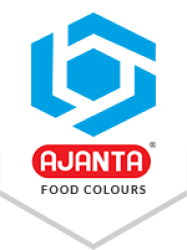The United States of America is a vast country located on the North American continent. It shares its land border with Canada and Mexico. The country is renowned for its robust economy, successful business, and manufacturing industries.
The history of the manufacturing industry in America is very interesting and long. In the manufacturing of any product, many components play a crucial role. Some help in the manufacturing of products and others in the appearance of the products, one of the most important components of them is colours, which manufacturers use to give an appealing and attractive look to the product, ultimately boosting product sales and increasing brand recognition.
The United States has many small and large manufacturing industries which require colours for their products. The United States manufactures colours but it's insufficient to fulfill all the country's colour demands. To fulfill the colour demand in the country, the United States imports colours from other countries as well, including India, Belgium, and Croatia.
US Industries Where Colours Play a Vital Role
Manufacturers in the United States use colours in products to make them attractive to consumers, shape product identity, convey messages, and evoke emotions. Let’s explore some key industries where colour plays an important role in American manufacturing industries.
Food and Beverage Industry
In the food and beverage industry of the United States, colours play a very important role. They are used to give an appealing and attractive look to food products, which increases sales and improves brand identity. Still, manufacturers often face some challenges in selecting the right colour for their products. These challenges include the quality of colours, stability, and appearance. Synthetic food colours are the best option to overcome these challenges for food and beverage manufacturers in the United States. These colours come in lots of different vibrant and appealing colour shades that allow manufacturers to create unique and interesting products that catch the attention of consumers. Synthetic food colours provide stability to the products and do not fade or change their colors, making products appealing for a long time. Most of the food and beverage manufacturing industries of the United States are located near California, Texas, and New York cities. According to Statista, the revenue of the Food Industry of America in 2025 amounted to US$864.00 billion, and it is expected to grow annually by 4.35% (CAGR 2025-2030).
Cosmetics Industry
In the cosmetics industry of America, colours play a crucial role. They provide an appealing and attractive look to a wide range of cosmetic and personal care products such as lipsticks, foundations, eyelashes, mascara, concealer, eyeshadow, highlighter, moisturizers, and more. Still, cosmetics manufacturers in the United States often face some challenges in selecting the right colour for their products. It includes colour vibrance, shade, stability, and quality. Synthetic cosmetic colours overcome these challenges for American cosmetic manufacturers, as these colours come in many different colour shades, that allow manufacturers to create unique and interesting cosmetic products. These high-quality pigments do not fade on products and provide vibrant and bright colors to products, which attract customers and boost sales. The US cosmetics industry is distributed in many regions such as California, New Jersey, and Florida. In these areas, lots of small and big manufacturing industries are located. According to Statista, the beauty and personal care products market of the US is expected to generate US$104.70 billion in 2025 and is expected to grow annually by 2.90% (CAGR 2025-2030).
Pharmaceuticals Industry
Colours also play an important role in the pharmaceutical industry of the United States. They help in the differentiation of the medicines whether it is different medicines or the same medicine with different strengths. Even so, pharmaceutical manufacturers often face some challenges in selecting the right colour for their products such as capsules, tablets, syrups, injectables, drops, supplements, and more. These challenges include quality, stability, and regulatory standards of the colours. Manufacturers can overcome these problems by using synthetic pharmaceutical colors in their products. These food-grade colours provide stability to medicines during the manufacturing process and storage. They give medicines a vibrant and appealing look, making them easily recognizable to both patients and health professionals. Moreover, synthetic food-grade colours meet all the regulatory standards set by governmental authorities. By using these colours, manufacturers gain the trust of consumers, which helps in brand recognition and ultimately boosts product sales. Most of the pharmaceutical industries are located in nearby big cities like California, New Jersey, and New York. According to Statista, the revenue of the only OTC pharmaceuticals market of the US amounts to US$42.76 billion in 2025, and the market is expected to grow annually by 3.65% (CAGR 2025-2029).
Chocolate Industry
In the United States’ chocolate industry colours play an important role. They make the chocolates more appealing and attractive to consumers, which catches their attention and increases sales. Still, US manufacturers often face some challenges in selecting the appropriate colours. They want vibrant and stable colours for their chocolate manufacturing. Chocolate manufacturers in the United States can overcome these challenges by using high-quality synthetic food colours in their products. These colors come in various shades that allow manufacturers to make products different from their competitors. Synthetic food colours provide good stability, meaning they do not fade or change their colours while manufacturing and storage. They are also considered safe for human consumption and approved by various governmental bodies including the Food and Drugs Administration (FDA). Most of the chocolate manufacturing industries of the United States are located in the Pennsylvania, Northeast, and Midwest regions. According to Statista, the US generates the most revenue in chocolate’s global consumption. According to Statista, the revenue of the chocolate confectionery market in the US amounts to US$24.00 billion in 2025, with an expected annual growth rate of 3.59% (CAGR 2025-2030).
Animal Feed Industry
Colours are also helpful in the animal feed industry of the United States. They provide an appealing look to feed that encourages animals to feed properly and stay healthy. It helps in differentiating the various feeds such as for poultry, swine, or cattle. By using synthetic food colours in their products manufacturers stand out from their competitors which ultimately increases brand recognition and sales. However, selecting the right color is a challenging task for US manufacturers. They want stable and vibrant colors for their products. Synthetic food colours overcome these challenges of American animal feed manufacturers, as they come in different colour shades that provide an appealing and vibrant look to the feed. In the United States, colour merchants, distributors, and suppliers import colours at low prices from other countries and sell them in the country and make a profit on each sale. Some of them are selling the colours under the brand name from their bought colours, while others create their own labells and sell under their own branding. In the US, most of the animal feed manufacturing industries are located in states such as Iowa, Texas, North Carolina, Georgia, and Illinois. According to Statista, the US pet food market's revenue amounted to US$61.83 billion in 2025. The market is expected to grow annually by 6.04% (CAGR 2025-2030).
Cultural Preferences of Colours in the US
In the United States, people often have some cultural preference for some certain colors. Manufacturers in the United States use those colours strategically in their products to enhance sales. For example, red and yellow colours are associated with energy and excitement in the United States which makes it an ideal choice for use in food and beverage products. In terms of chocolates, warm and rich browns are frequently chosen to signify indulgence or luxury perceptions. On the other hand, cosmetics may be designed using multiple colour ranges depending on trends among friends about what is considered beautiful. Manufacturers are very mindful of cultural tastes. They use synthetic colours to make products more appealing and attractive.
Regulatory Guidelines on Colours in the US Market
In the United States of America, the use of colours in products like food, beverages, cosmetics, and pharmaceuticals is overseen by the US Food and Drug Administration (FDA). This governmental body ensures the safety of colours for human consumption whether they are synthetic or natural. The FDA checks the quality of colours by conducting inspections, sampling, testing, and enforcement actions. The FDA also reviews petitions for new colours or any changes in existing colours. The FDA works with other agencies, such as the Environmental Protection Agency (EPA) and the Department of Agriculture (USDA), to make sure that colours do not pose any environmental or health risks.
Starting a new business in the United States is not an easy task. Startups face lots of challenges such as competition with the companies who are already in the market, making products appealing and different from others so people can easily recognize them, making product pricing affordable for everyone, etc. Startup businesses can solve their many challenges by using high-quality synthetic food colours in their products. These colours come in various vibrant and appealing shades that help startups to make their product different from their competitors and create brand recognition of their products.
If you are a manufacturer or a startup company who wants high-quality colours that help you to grow your business, you can go with Ajanta Food Colours, a global leader in the synthetic food color manufacturing industry. The company operates 5 integrated, advanced, and eco-friendly manufacturing plants in India that fulfill the colour demand on a global level. Ajanta Food Colours uses the latest machineries in its manufacturing industry that ensures the quality of its colours. These machineries include ICO OES to detect heavy metals in raw materials and finished goods, high-performance liquid chromatography for organic impurities, UV spectrometry to analyze pigment content and strength, absorbance curves of colours, thin-layer chromatography, vacuum ovens for LOD tests, humidity detection in products, and colour matching machines along with other instruments for complete testing of the raw materials and colours.
Ajanta Food Colours exports its FDA-approved, supra range of colours to many North American countries including the United States of America. The company provides colours at affordable prices and timely delivery, which saves money and ensures colours are received when needed. The company also provides personalized help and support, making the customer's experience better. Ajanta Food Colours is committed to keeping its product quality and performance consistent, which makes it a reliable option. The company focuses on making customers happy and building loyalty, which makes Ajanta Food Colours the best option for American businessmen, startups, and manufacturers who are looking for high-quality colour solutions.
Ajanta received various awards and certificates globally which shows the company’s expertise in the synthetic food colours manufacturing industry. Some of the awards and certificates received by Ajanta Food Colours include The Arch of Europe Award, the Bureau of Indian Standards (BIS) Award, certifications from The Food Safety and Standards Authority of India (FSSAI), the US Food and Drug Administration (US FDA), as well as Halal, Alcumus ISOQAR, Star-K Kosher, Food Safety System 22000 (FSSC 22000), and ISOQAR certifications, among others.
To know more about Ajanta Food Colours and its high-quality colours or for any other information please contact us today!





